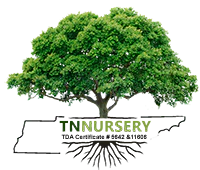Filters
The Versatile Beauty of Ornamental Grasses in Landscaping
Ornamental grasses lends color, texture, and interest to a yard or garden. The beautiful blooms and swaying nature of this airy foliage make it an excellent choice for borders, as ground cover, and for soil erosion control. Low-maintenance and hardy, ornamental grass creates a striking display when planted in a large container with flowering annuals and trailing vines.
Pensylvanica Sedge Ornamental Grasses
Carex Pensylvanica is a mounding ground cover that brings a bamboo-like texture to a garden. Graceful blades arch outward and range from light green to yellow in summer before turning to a subtle pale beige in the fall. Blades of the grass are weeping and about 10 inches long. Japanese forest grass is used in containers to create a showy display on a patio.
Bulrush Grass
Bulrush grass has stalks of emerald green. Pest and disease-resistant, it blooms in late summer and stay green year round. Bulrush offers all seasons of color and texture. It pairs beautifully with other tall grasses, hydrangeas, coneflowers, phlox, and daylilies.
Pampas Grass
Pampas grass is popular due to its showy display of tall and fluffy plumes. This hardy grass is available in various colors, including pink, cream, blue-green, and yellow stripes. It blooms from summer to late fall and will come back year after year as a lovely focal point or privacy hedge along a driveway or garden path.
Chinese Feathergrass
Chinese Feathergrass features a delicate and feather-like texture that adds texture and height to containers and interest to borders and rock gardens. Slender green leaves have wispy cream-colored ends that sway gracefully in the breeze. It keeps its color but can turn brown over the winter. Plant with colorful flowers like tulips, lavender, black-eyed Susans and salvia.










